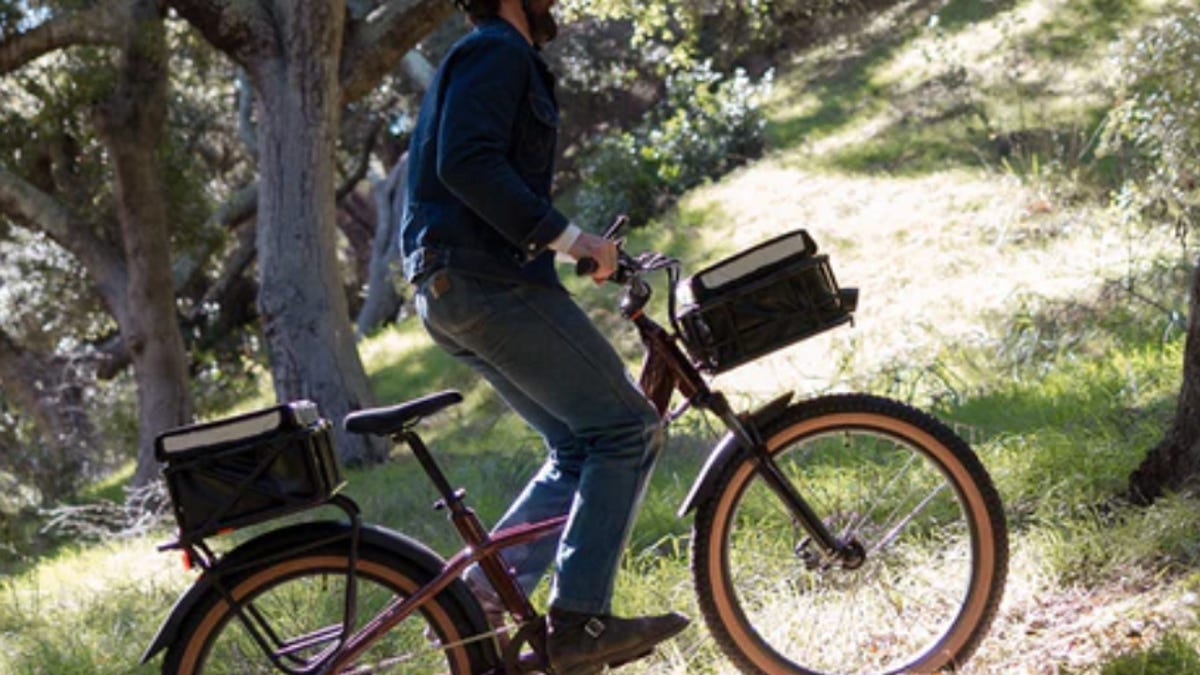Technologies
Apple’s Messages Is About to Get a Major Update. Here’s What’s Coming
Updates are coming to Apple’s Messages through the iOS 17 update that everyone can test out in a month.

New features are coming to Apple’s Messages thanks to the iOS 17 software update the company announced Monday. With iOS 17, you’ll be able to turn pictures into stickers, transcribe voice memos, keep your friends and family notified on your way home, and more.
News about the iOS 17 Messages update came during the keynote address at the Worldwide Developers Conference at the company’s headquarters in Cupertino, California. Apple traditionally uses the annual event to give developers a preview of updates to its desktop and mobile software, and sometimes it introduces new hardware too. On Monday, the company unveiled its first mixed reality headset, the Vision Pro.
More from WWDC 2023
Live Stickers coming to iOS 17
The update to Messages will be part of iOS 17, which will arrive this fall. With the new features, people will be able to take their photos and turn them into stickers they use in text conversations, alongside standard emoji, which can also be used as stickers. People can customize their stickers with effects — like shiny, puffy, comic and outline — and keep them in a new drawer in the keyboard for streamlined access, Apple said in a press release. Stickers will be available systemwide, including in third-party apps.
To make a photo into a sticker, you’ll touch and hold an object in a photo. Then you can style your object with various effects, outline it or create animated Live Stickers with Live Photos. To use the sticker in Messages, you’ll add them in the bubble from the Tapback menu.

16:43
Search in Messages, Check In and more
Also coming is a refined search feature. People will be able to apply additional filters to their Messages search to more quickly find the exact conversation they’re looking for. Plus, when you’ve received lots of texts in a group chat, you’ll be able to use the catch-up arrow to locate where the conversation left off last.
iOS 17 Messages will also transcribe voice memos you receive, if you don’t have the time to listen to them. Apple also announced a new feature that will let you keep track of your friends by viewing their location in your text conversation.

Apple’s Check In feature through iOS 17.
Another new location sharing feature is Check In. If you want to keep a friend or family member updated on your journey home, for example, you’ll be able to use Check In, which notifies the person of your whereabouts and lets them know if you’re having trouble getting home. «If they are not making progress toward their destination, useful information will be temporarily shared with the selected contact, such as the device’s location, battery level, and cell service status,» Apple said in the press release. Check In will be end-to-end encrypted, so only you and the person you’re sharing this information with is privy to your location.
Developers can try out iOS 17 today, and everyone can try out the public beta in a month. These iPhones will be able to run the update.
Other iOS 17 updates
The iOS 17 updates don’t stop at Messages. Apple also introduced Live Voicemail, which will give people the ability to see the message a person is leaving you as it is being recorded. This could help with deciphering between important calls that unknown numbers leave and spam.
The iOS 17 update for FaceTime includes audio and video messages, so people can leave their friends and families a FaceTime voicemail of sorts.
Also, if people want to share a contact with one another, they can use the new feature NameDrop. By bringing two iPhones or one iPhone and one Apple Watch close together, contact information can be transferred from one device to the next.
Apple kicked off WWDC by unveiling a 15-inch MacBook Air and offering details on its latest desktop software, MacOS 14 Sonoma. Also at WWDC, Apple revealed its brainiest Mac chip yet and upgraded its Mac Pro to M2 Ultra Silicon. There are new features coming in Watch OS 10 too.
Technologies
Fubo Loses NBCUniversal Channels, Putting Your NBA Games in Jeopardy
Sound the carriage dispute Klaxon: Some network programming has disappeared from the streaming service after content negotiations fell through.

If you’ve noticed your favorite show has recently gone missing from Fubo, it’s probably because an entire block of programming just disappeared from the site’s channel lineup.
The live TV streaming service is engaged in a carriage dispute with NBCUniversal, a media company whose subsidiaries include NBC News, Universal Studios, Peacock, Telemundo and Illumination, among other brands.
On Nov. 21, NBCUniversal pulled all of its networks from Fubo. This is an especially big deal for sports watchers on the streaming service, since the Fubo Sports subscription — which began earlier this year — depends on the licensing agreement with NBCUniversal. However, viewers can still access sports content on networks like ESPN, CBS and ABC.
Fubo released a statement on Tuesday, alleging the media giant is engaging in «discriminatory tactics» that are harming the streamer’s subscribers.
«NBCU is discriminating against Fubo and our subscribers,» the statement says. «They allowed YouTube TV and Amazon Prime to integrate Peacock directly into their channel store, but refused to give Fubo the same rights.»
Don’t miss any of our unbiased tech content and lab-based reviews. Add CNET as a preferred Google source.
Fubo says NBCUniversal is trying to force a multiyear deal for certain channel packages under the media giant’s new spin-off media company, Versant, and that it’s trying to upcharge on the Fubo Sports subscription by adding «expensive, non-sports channels» into the agreement, increasing the cost.
According to NBCUniversal’s website, the Versant brands include CNBC, E!, MS Now, SyFy and USA, among other channels.
NBCUniversal did not respond to a request for comment.
Fubo says that it’s willing to move forward without NBCUniversal content if an agreement cannot be reached.
«Fubo is committed to bringing its subscribers a premium, competitively-priced live TV streaming experience with the content they love,» its statement concludes. «That includes multiple content options, including a sports-focused service, that can be accessed directly from the Fubo app.»
Fubo recently became an affiliate of The Walt Disney Company, following its merger with Hulu’s live TV platform in October. It’s unclear whether this merger affected content agreement negotiations with NBCUniversal. Fubo did not respond to a request for comment on this.
Technologies
Spotify Will Reportedly Get More Expensive in the US Next Year. Here’s What to Expect
The music streaming service will reportedly raise prices again after subscription rate hikes in other regions.

After announcing it is raising prices in regions including Europe, South Asia and Latin America, Spotify is reportedly about to increase prices again in the US.
The US is included in the latest Spotify price hike on its Premium services starting in early 2026, according to the Financial Times, which cited three sources familiar with the streaming music company’s dealings. For now, the least expensive Premium plans in the US start at $12, but the price hike would likely put it in line with the other regions where the Premium plan costs about $14 a month.
Don’t miss any of our unbiased tech content and lab-based reviews. Add CNET as a preferred Google source.
Spotify also offers a Premium Family plan that covers six people in the same household for $20 and plans for students ($6 a month bundled with Hulu) and couples ($17 a month). Spotify also offers a Basic plan that does not include access to audiobooks for $11 a month. A representative for Spotify did not immediately respond to a request for comment.
A steady increase
If the report is accurate, this would be the third price increase on Premium plans in the US since 2023. Before those hikes, Premium plans were $10, but Spotify raised its minimum price by $1 in 2023 then again in 2024.
Just this week, Spotify added the ability to seamlessly import playlists from other music services including Apple Music and Tidal.
Spotify has faced some controversy this year, including some music acts abandoning the platform and some customers canceling subscriptions over advertising for Homeland Security’s ICE program. CNET has a guide for canceling your Spotify subscription.
The company is the market leader among music streaming apps with about 32 percent market share as of the end of 2024.
Technologies
Some Rad Power Bike E-Bike Batteries Can Catch Fire, Consumer Protection Agency Warns
The company declined to offer full replacements or refunds, citing financial constraints.

The US Consumer Product Safety Commission is warning that some lithium‑ion batteries used in certain e‑bikes made by Rad Power Bikes pose a serious fire hazard that could lead to injury or even death. The agency says the batteries, identified by model numbers RP‑1304 and HL‑RP‑S1304, can unexpectedly ignite or explode, especially if the battery or its harness has been exposed to water or debris.
The recall has been marked as a «public health and safety finding» because Rad Power Bikes has declined to offer full replacements or refunds for all consumers, citing financial constraints.
CPSC reports 31 incidents of fire involving these batteries, including 12 cases where property damage totaled approximately $734,500. Some of these fires occurred even when the battery was not in use or charging, but was in storage.
Don’t miss any of our unbiased tech content and lab-based reviews. Add CNET as a preferred Google source.
The batteries were sold as either original or replacement units for several Rad Power Bikes e-bike models and were available through RadPowerBikes.com, Best Buy and independent bike shops nationwide.
«Rad informed the agency that its demand to replace all batteries, regardless of condition, would immediately put Rad out of business, which would be of no benefit to our riders,» the company said in a statement issued with the CPSC warning. «Rad is disappointed that it could not reach a resolution that best serves our riders and the industry at large. Rad reminds its customers to inspect batteries before use or charging and immediately stop using batteries that show signs of damage, water ingress, or corrosion, and to contact Rad so we can support our riders.»
The CPSC’s statement does not apply to all Rad batteries, and does not apply to its Safe Shield or semi-integrated batteries.
Consumers who have one of the affected batteries are urged to stop using it immediately and dispose of it properly via a household hazardous‑waste collection center. Do not place the batteries in standard curb-side recycling or trash bins, and refrain from reselling them.
-

 Technologies3 года ago
Technologies3 года agoTech Companies Need to Be Held Accountable for Security, Experts Say
-

 Technologies3 года ago
Technologies3 года agoBest Handheld Game Console in 2023
-

 Technologies3 года ago
Technologies3 года agoTighten Up Your VR Game With the Best Head Straps for Quest 2
-

 Technologies4 года ago
Technologies4 года agoBlack Friday 2021: The best deals on TVs, headphones, kitchenware, and more
-

 Technologies4 года ago
Technologies4 года agoVerum, Wickr and Threema: next generation secured messengers
-

 Technologies4 года ago
Technologies4 года agoGoogle to require vaccinations as Silicon Valley rethinks return-to-office policies
-

 Technologies4 года ago
Technologies4 года agoOlivia Harlan Dekker for Verum Messenger
-

 Technologies4 года ago
Technologies4 года agoiPhone 13 event: How to watch Apple’s big announcement tomorrow
